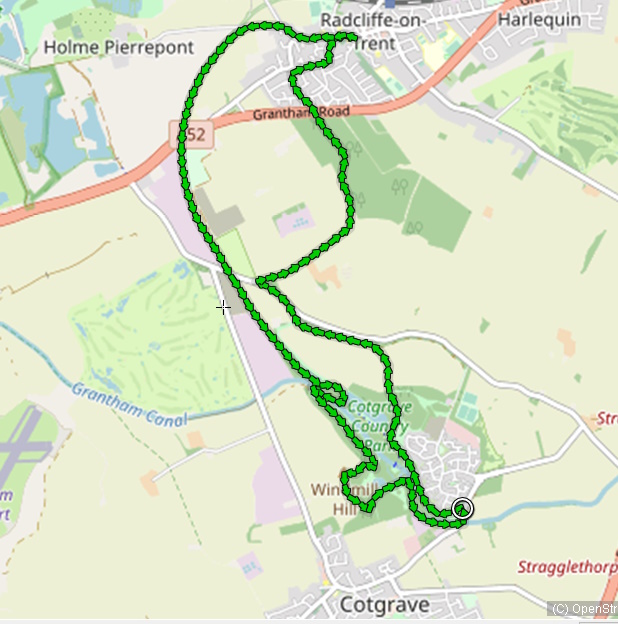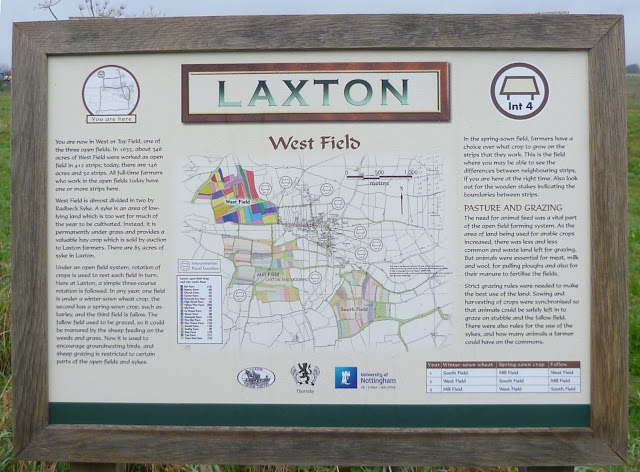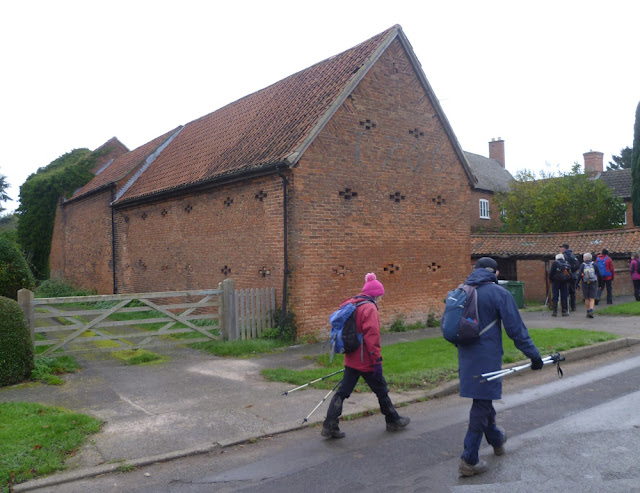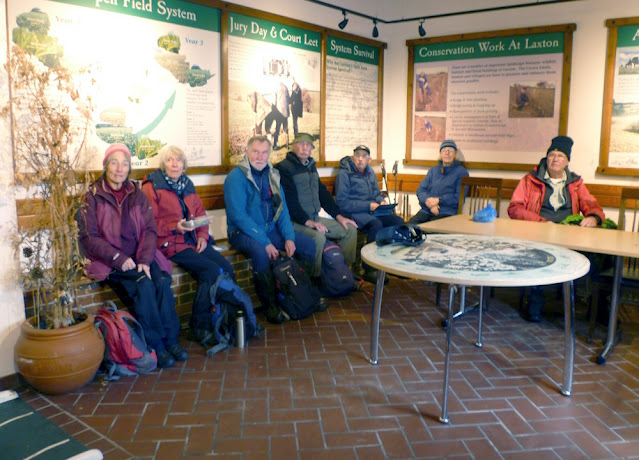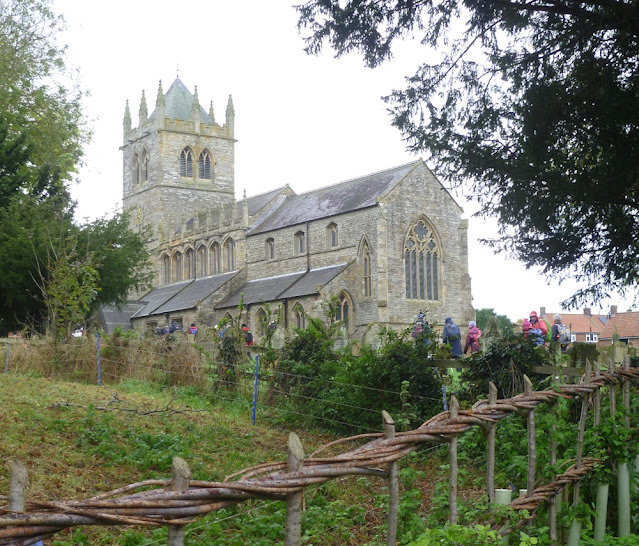 Rab led ten ramblers on a 9½ mile walk starting from
Rushcliffe Country Park. The air temperature was at 0°C and the ground was
frozen reducing the muddy conditions - flat walking with not a single stile!
Rab led ten ramblers on a 9½ mile walk starting from
Rushcliffe Country Park. The air temperature was at 0°C and the ground was
frozen reducing the muddy conditions - flat walking with not a single stile!
Thanks Steve for the photos and John J for the route.
 |
| The start in Rushcliffe Country Park |
 |
| Heading out |
 |
| The old Schoolhouse in Bunny |
 |
| St Mary's Church, Bunny |
 |
| Bunny Moor |
 |
| Under the Great Central Railway |
 |
| Lunch in Gotham |
 |
| Fine wall paintings in Gotham |
 |
| St Lawrence's Church Gotham |
 |
| Fairham Brook on its way from near Old Dalby to join the Trent near Clifton Bridge. Shown here draining The Moors, a flat fenland landscape |
 |
| The way back - along the Great Central Railway line from Sheffield to London (not all the way) |































